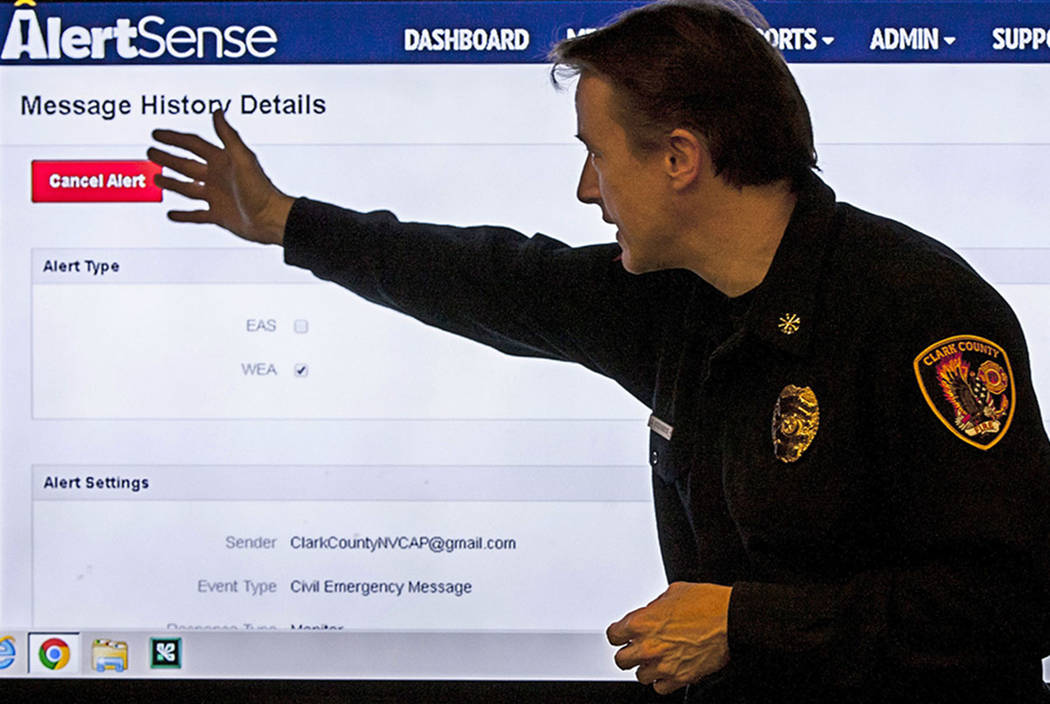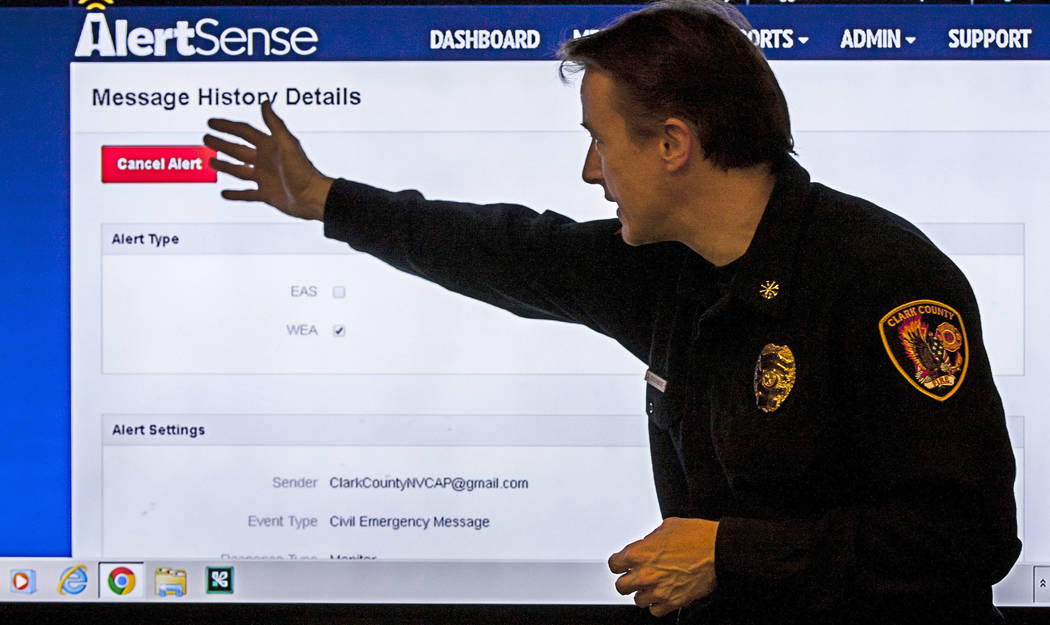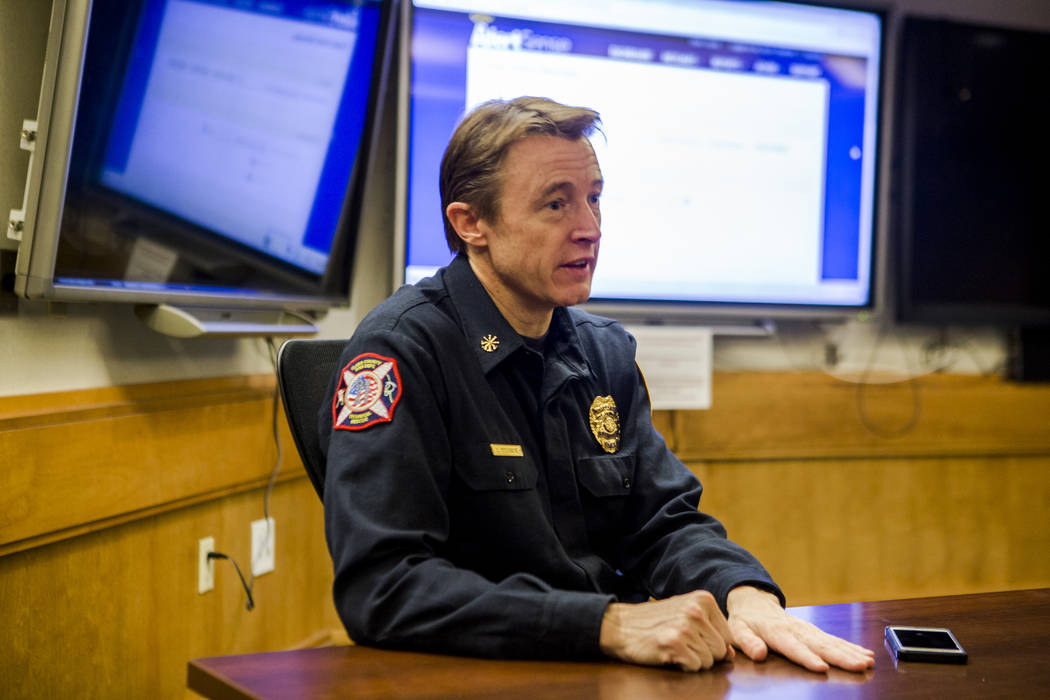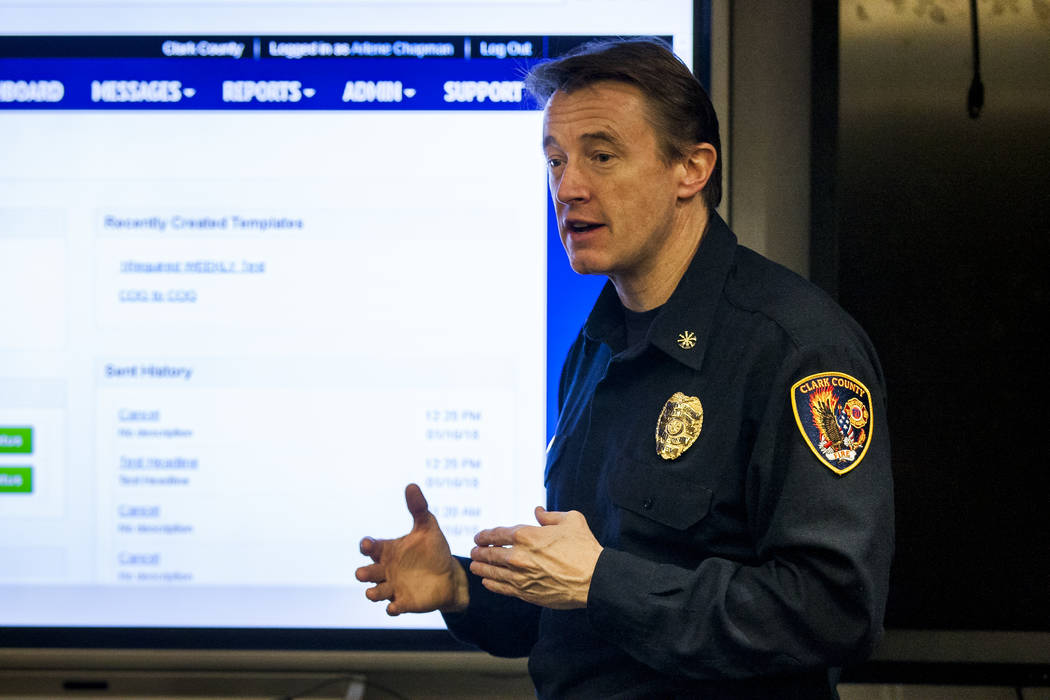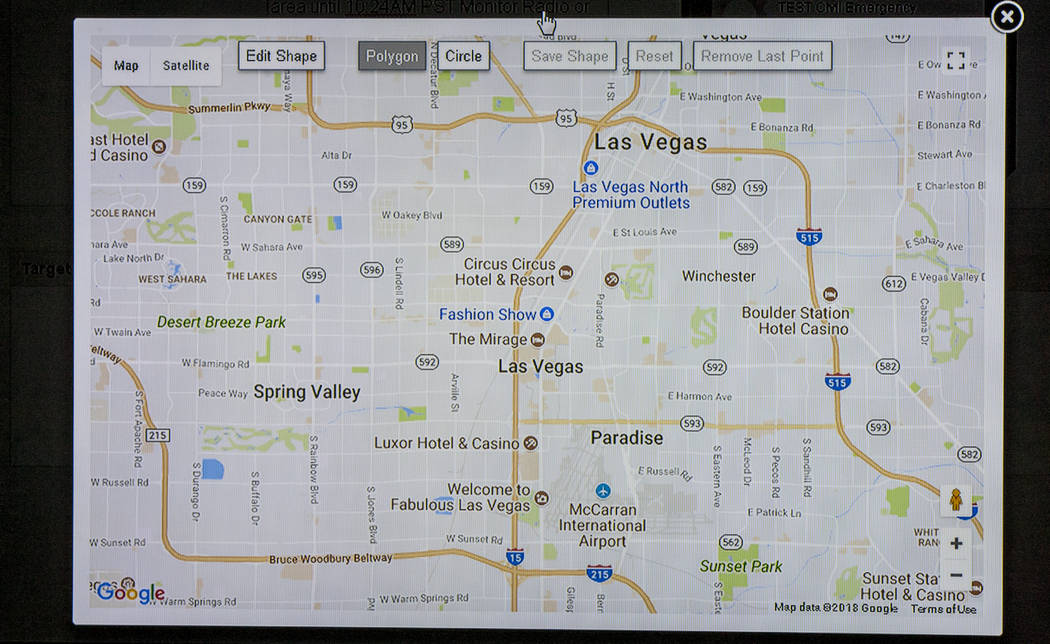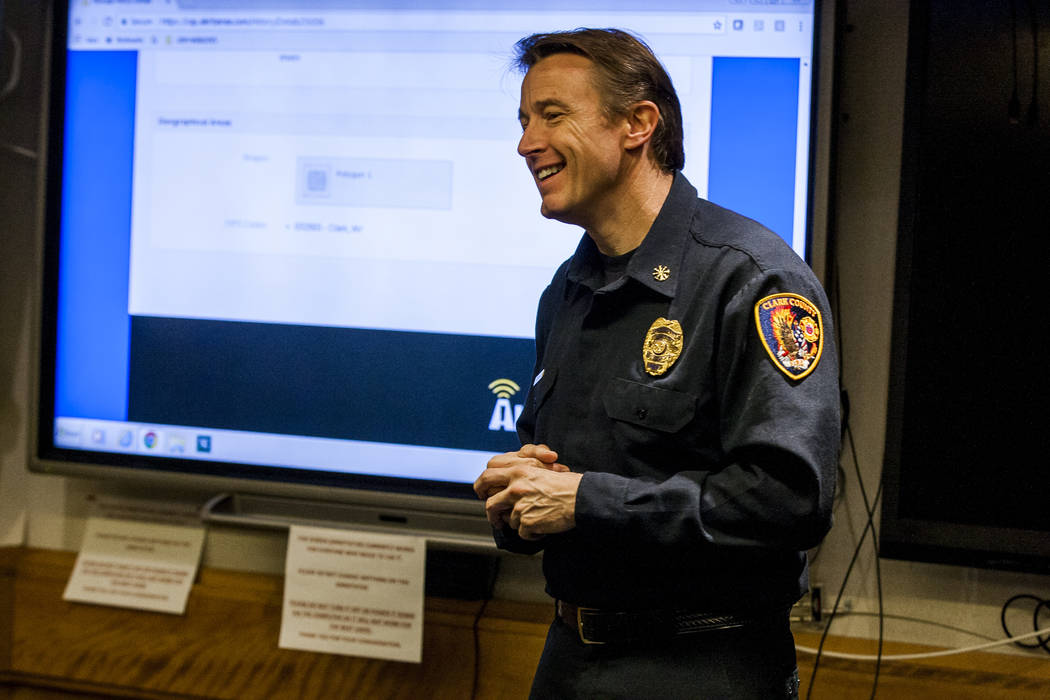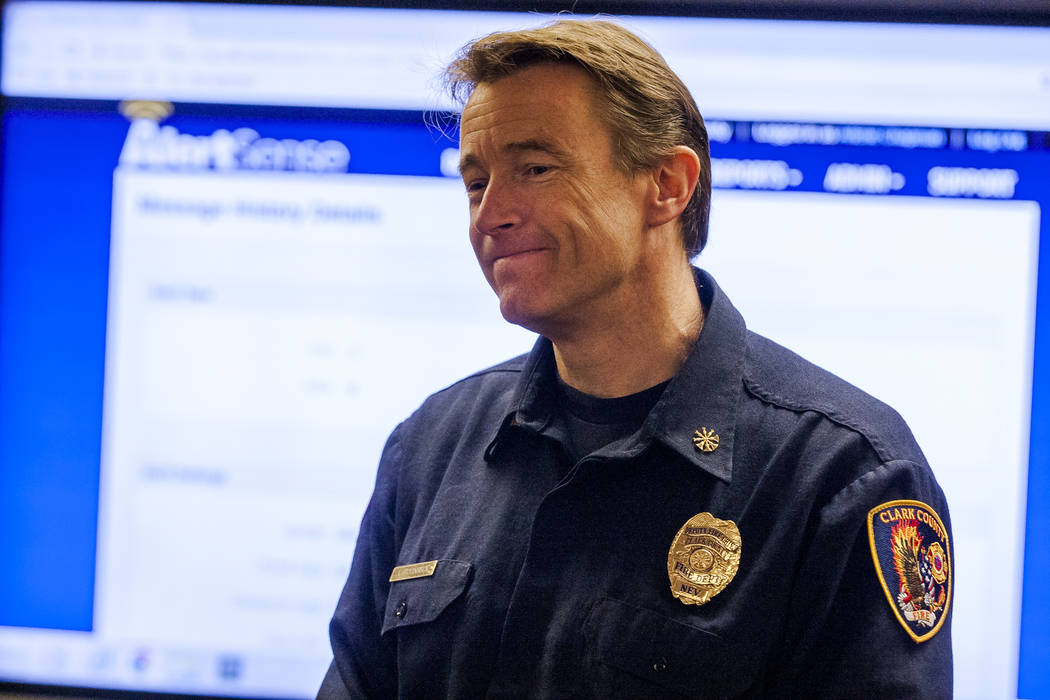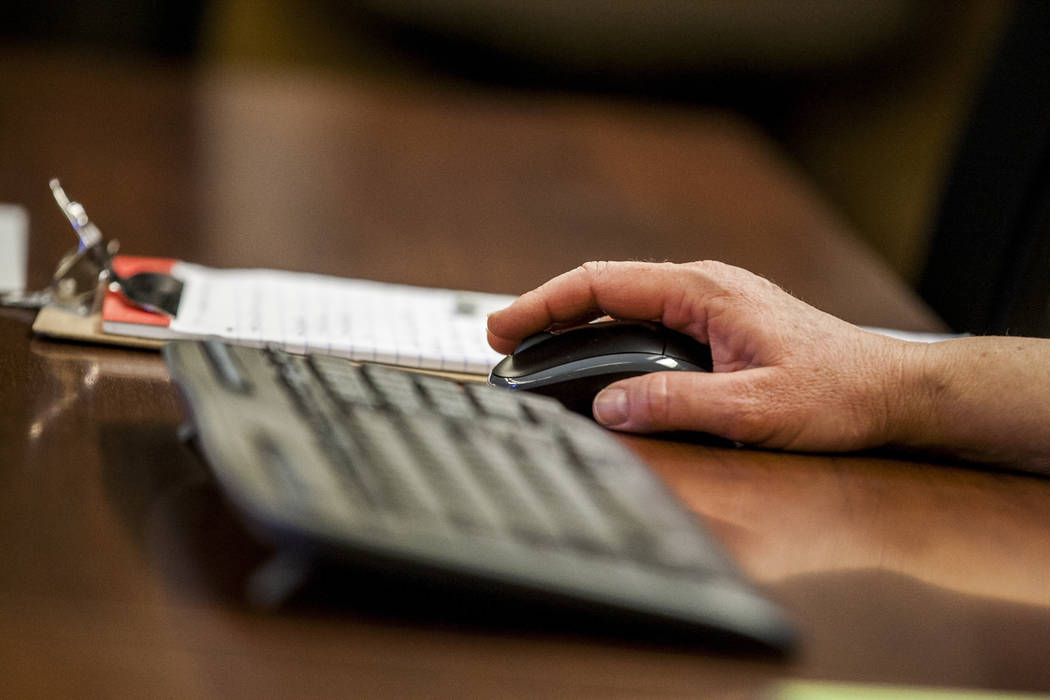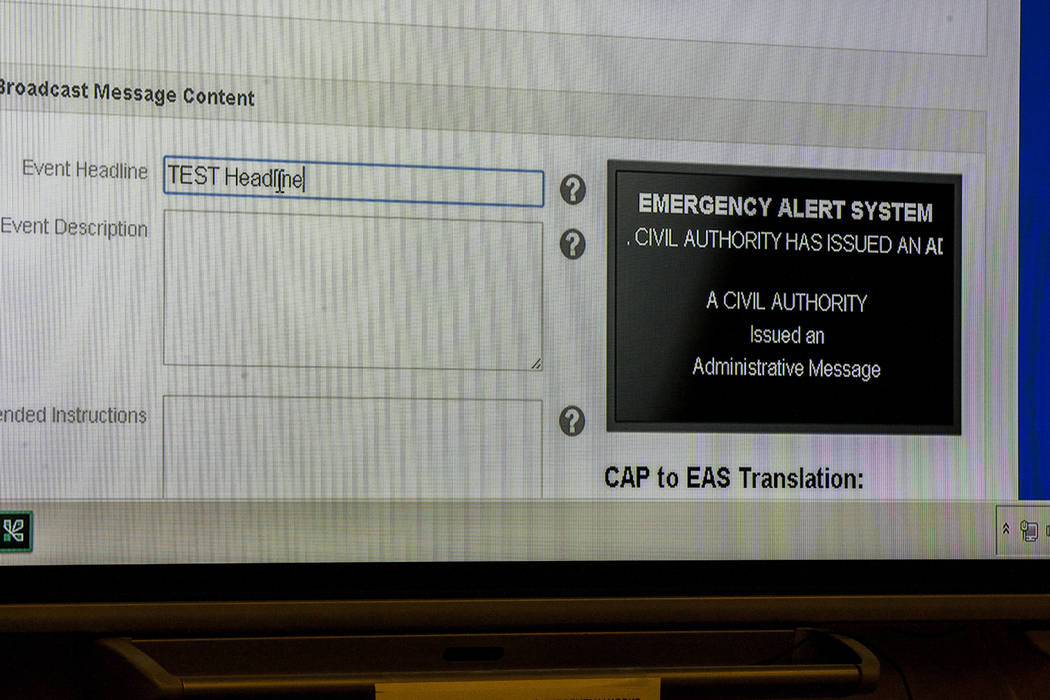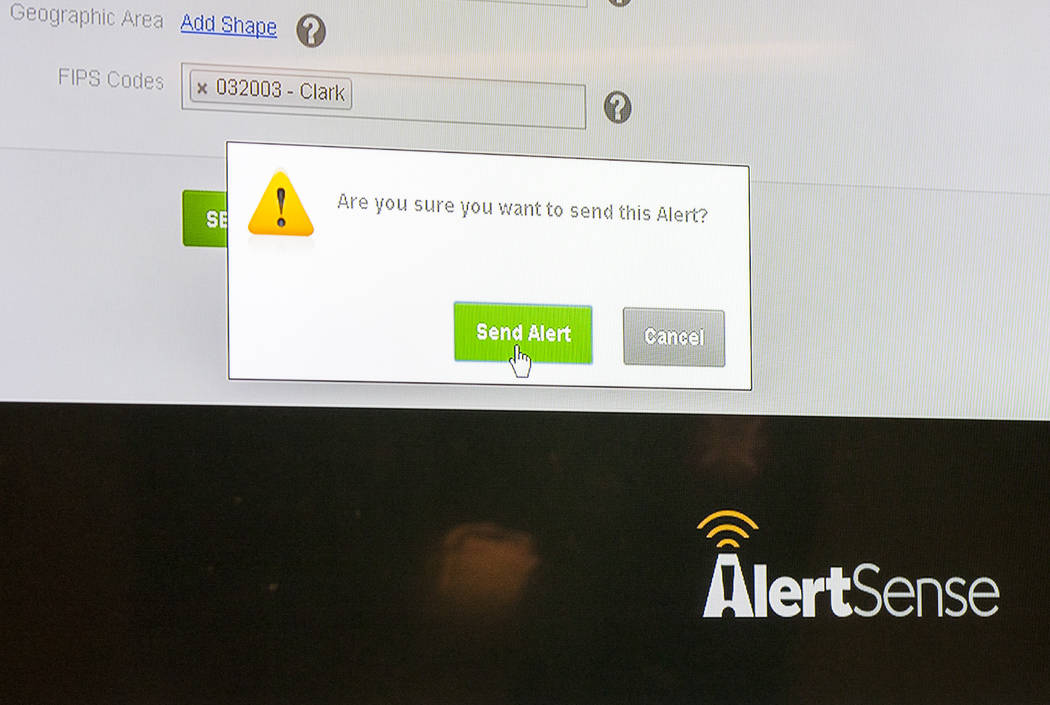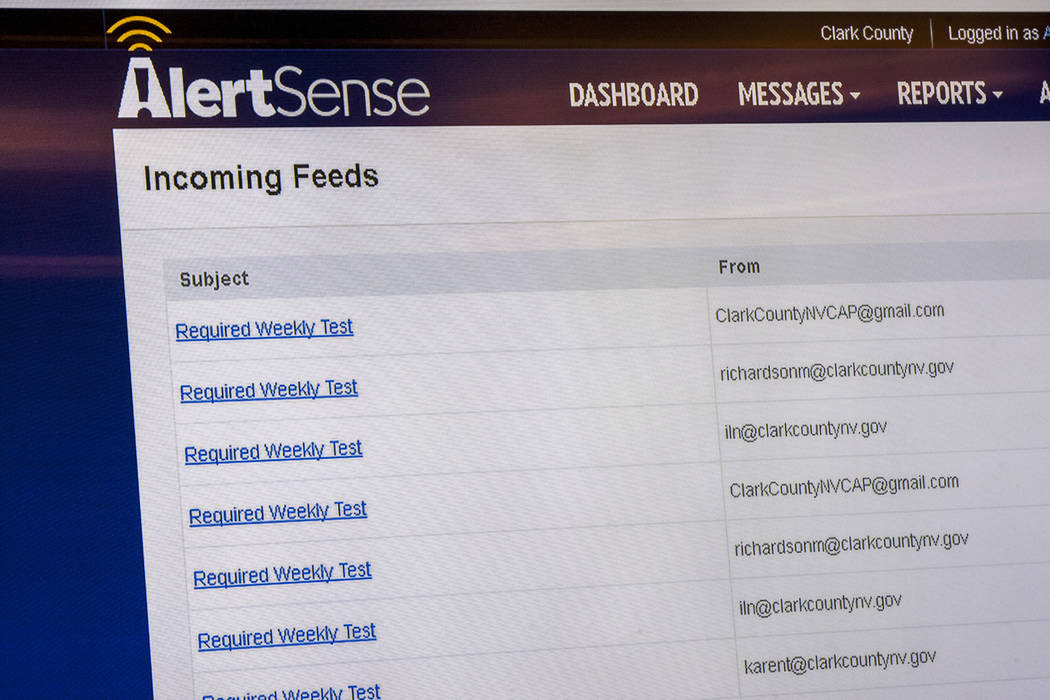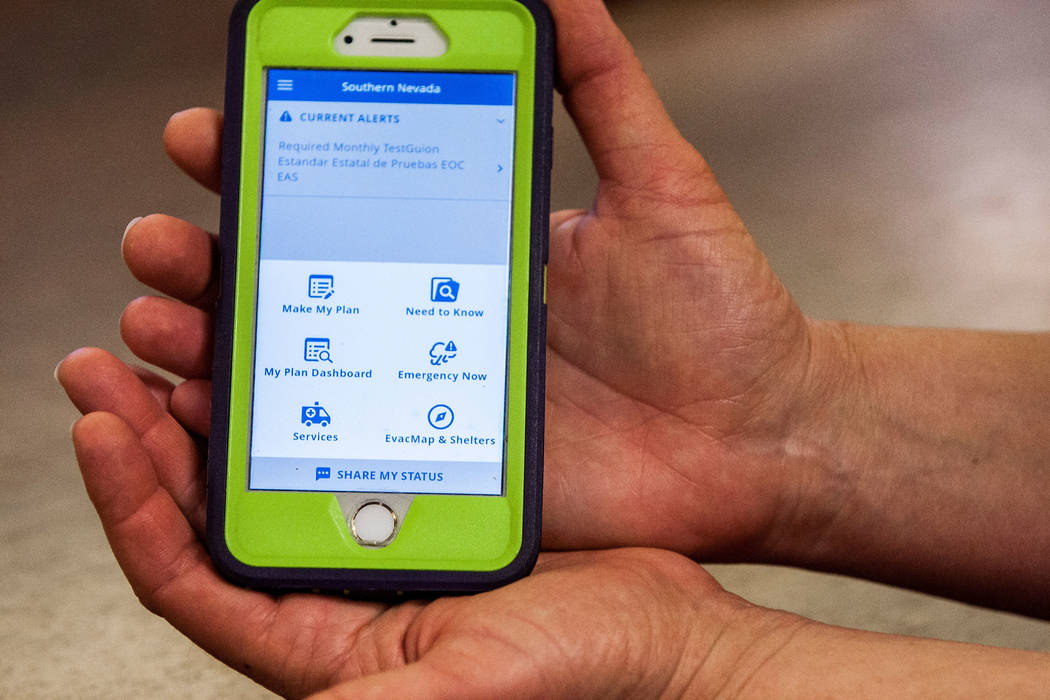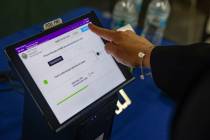Clark County wants to avoid false alerts like the one in Hawaii
Inside the conference room at Clark County Fire Station 18 on Thursday, Arlene Chapman signed into AlertSense.
Instead of alerting the masses, the Clark County Emergency Management public warning and resources coordinator scrolled through the application. She clicked “Demo.”
Editing the 90-character message, she wrote TEST in the predrafted text: CIVIL EMERGENCY MESSAGE IN THIS AREA UNTIL 10:24 A.M. PST.
“This is a test,” she said. “Always double-check.”
She and Deputy Fire Chief John Steinbeck test the alert system every week and were doing so Thursday morning, just days after Hawaii and Japan sent out false alerts that a ballistic missile had been launched and was on its way.
“They did the exact opposite; their information said specifically that it was not a test,” Steinbeck said. “So that’s kind of the worst possible scenario.”
When an alert is issued in Clark County, it comes from one of these agencies: Clark County Emergency Management, Henderson, Las Vegas, North Las Vegas, the National Weather Service, the state of Nevada or the Southern Nevada Health District, Steinbeck said.
The entities sometimes work together to push alerts to residents, but of the few predrafted alerts, none addresses a missile.
For special circumstances like that, Steinbeck said, he would craft his own message to avoid any mistakes.
“You have the ability to cause panic with this when it’s not used properly,” he said. “We have to make sure that we have the right information and it’s going to the right people.”
That’s the same reason the department decided not to issue an alert for the Oct. 1 mass shooting. There was just too little confirmed information, he said.
Using phones or mobile devices, members of the emergency management teams issue alerts using AlertSense, and they can broadcast the same alerts to TV or radio waves.
The alerts are mostly in regards to flooding, boil water notices or Amber Alerts.
There was once a false blizzard alert many years ago, Chapman said. It was quickly recanted.
Using the digital system, officials also can narrow the alert to a certain geographical area, though neighboring cell towers may receive the same alert.
In Clark County, the most frequent alerts are weather-related, but the Fire Department and other agencies may go door to door for some situations, such as avalanche and boil water warnings.
The most recent message — an Amber Alert — was sent over the summer, in conjuction with the Metropolitan Police Department, for a missing child. He was identified within 10 minutes, Steinbeck said.
Monthly tests conducted for radio and TV broadcasts are spread across different agencies throughout the state.
“We have to find the right middle ground. We’ve actually had classes with our emergency managers called Press the Button,” he said. “You have to be able to use it when it’s right and you have the discretion to.”
But in times when digital or internet service is not available, the agencies retain the old-school analogue system used about five years ago: a radio console in which they can dial in and make statements to be broadcast on TV and radio.
If Nevadans were issued a nuclear missile warning, there would be few options for staying safe, Steinbeck said.
“Any time you’re dealing with destructive power of that nature, there is no master plan as far as where residents are going. It’s time, it’s distance, and it’s shielding,” he said, adding that residents would have to try to go underground or become less exposed.
“There is no ability for Clark County to shelter 2 million residents and hundreds of thousands of visitors,” Steinbeck said.
In addition to alerts, the department uses social media to push out warnings, and the Southern Nevada Community Preparedness app gives more detailed information on how to be prepared for emergencies and how much food, water and supplies they should have on hand in any sort of event, Steinbeck said.
“I hope mistakes made using the app can shed any light,” he said. “And won’t affect any judgment or policy toward this tool, because we need to have this available.”
Contact Briana Erickson at berickson@reviewjournal.com or 702-387-5244. Follow @brianarerick on Twitter.
False alarm in Clark County
In July 2016, UNLV students and faculty received an active shooter alert, which was later determined to be a false alarm.
The situation was deemed "all clear" just four minutes after the alert was accidentally activated, school officials said.
The alert read "ACTIVE SHOOTER! EMERGENCY! There is a suspect with a firearm on the UNLV campus." It also included, "THIS IS NOT A TEST!"
Minutes later, the second announcement read, "The situation at UNLV is now all clear."
The false notification was triggered by a UNLV police employee, said UNLV Chief of Police Jose Elique.



